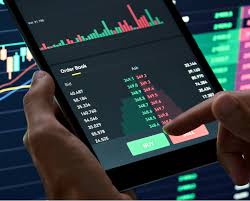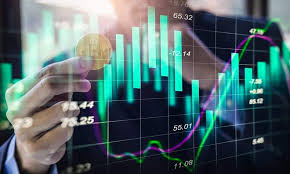
Understanding Crypto Trading Volume
The cryptocurrency market is known for its volatility, and one of the key metrics that traders and investors look at is Crypto Trading Volume. It represents the total number of coins or tokens exchanged over a specific period, providing a glimpse into market activity. High trading volume often indicates strong interest in a particular cryptocurrency, while low volume might suggest a lack of interest or liquidity issues. For a deeper dive into this topic, you can visit Crypto Trading Volume https://www.newsvoir.com/index.php?option=com_content&view=catnews&catid=117&Itemid=37&page=344.
What is Crypto Trading Volume?
Crypto trading volume refers to the quantity of a specific cryptocurrency traded within a defined time frame, such as 24 hours. This metric is crucial because it reflects the level of activity and liquidity in the market. A higher volume often signifies more investors are buying or selling a cryptocurrency, which can lead to more accurate price movements. Conversely, low trading volume could indicate less interest, making it harder to execute trades without affecting prices significantly.
Why is Trading Volume Important?
1. Market Sentiment: Trading volume can act as an indicator of market sentiment. Rising volumes might indicate bullish sentiment as more investors jump into a market, while falling volumes could suggest a bearish outlook.
2. Price Stability: High trading volume tends to lead to more stable prices. When many participants are willing to trade, price fluctuations become less pronounced. On the contrary, low volume can cause dramatic price changes with relatively few trades.
3. Liquidity: Liquidity is essential for any market. High trading volume typically indicates high liquidity, which allows traders to buy and sell without causing significant shifts in the price. Low trading volume can lead to higher spreads between the bid and ask prices.
Analyzing Crypto Trading Volume
When analyzing crypto trading volume, traders often use several tools and indicators:

1. Volume Charts: Most trading platforms provide volume charts alongside price charts. Examining these can help traders identify trends and reversals.
2. Volume Indicators: Certain indicators, such as the On-Balance Volume (OBV) and the Accumulation/Distribution line, use volume data to help traders detect momentum and potential price movements.
3. Comparative Volume: Comparing current trading volume to historical averages can help traders identify whether recent movements are significant or just noise.
Factors Influencing Crypto Trading Volume
Numerous factors can influence the trading volume of cryptocurrencies:
1. News and Events: Major news announcements, regulatory changes, or technological advancements can spark interest and increase trading volume.
2. Market Conditions: In a bull market, traders may be more inclined to buy, resulting in increased volume, whereas in bear markets, volume may decline.
3. Exchange Listings: When a cryptocurrency is listed on a prominent exchange, it can attract more traders, thus increasing its volume significantly.
Strategies Incorporating Trading Volume
Traders often incorporate trading volume into their strategies:

1. Volume Breakouts: Traders might look for breakouts in price coupled with increased volume. Such breakouts can signal strong momentum and potential price increases.
2. Volume Divergence: If price is making new highs while volume is declining, it may signal weakening momentum and a potential reversal.
3. Volume Profiles: Analyzing volume at different price levels can help traders identify areas of strong support and resistance, improving their entry and exit strategies.
Potential Risks of Relying on Trading Volume
While trading volume is a valuable metric, it should not be the sole factor in trading decisions:
1. False Signals: Sometimes high volume can accompany price declines, especially in markets with significant volatility, leading to possible false signals.
2. Volume Manipulation: In less regulated markets, trading volume can be manipulated. Traders should be cautious of sudden spikes in volume that may not reflect genuine interest.
3. Market Psychology: Volume does not always correlate with rational market behavior. Traders need to consider sentiment and external factors that might impact their trading strategies.
Conclusion
In the fast-paced world of cryptocurrency, understanding Crypto Trading Volume is crucial for informed decision-making. By analyzing volume trends, employing relevant strategies, and being mindful of the associated risks, traders can navigate this volatile market more effectively. As the cryptocurrency landscape continues to evolve, keeping an eye on trading volume can provide valuable insights into market dynamics and trading opportunities.